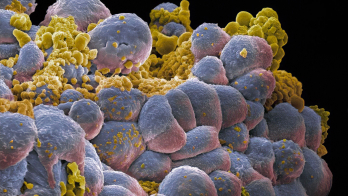A new particle accelerator in the UK has achieved a significant electron acceleration milestone. On 5 April, the Versatile Electron Linear Accelerator (VELA) produced its first electron beam, an important step on the way to being ready for commercial and research use this summer.
VELA, which is situated at the Daresbury Laboratory of the Science and Technology Facilities Council, is designed to be one of the most flexible particle accelerators of its type. The medium-term aim is to develop the 6 MeV injector with additional linac sections in order to achieve 250 MeV beams at 400 Hz with bunch charges in the range 50–250 pC. At present, the beam pulses are generated by targeting a copper photo-cathode with a UV laser.
With stable, reliable beams over a broad range of energies, VELA will provide interesting new opportunities for users and collaborators. The facility is exceptional in offering access on “both sides of the wall”, allowing users not only to perform conventional studies on samples but also to access the accelerator itself. This opens up the possibility of testing a variety of accelerator components or items for beam diagnostics.
One of the primary collaborating institutes currently working on VELA is Strathclyde University. The team from Strathclyde has provided a significant level of hardware that will allow a demonstration of the capability of RF injectors for use with laser-driven plasma wakefield accelerators. The researchers plan to install an RF injector for Strathclyde’s project Advanced Laser-plasma High-energy Accelerators towards X-rays (ALPHA-X), but to date they have not been able to demonstrate a suitable performance capability. Working with VELA, however, they have developed a system that is directly suited to their application and its design is being qualified, enabling its use at the university’s facility.
The plan for VELA is to continue collaborations with other leading institutions and with industry. The aim is that the facility will allow the development of technological advances in accelerator design, for use not only in research but also in industry.








